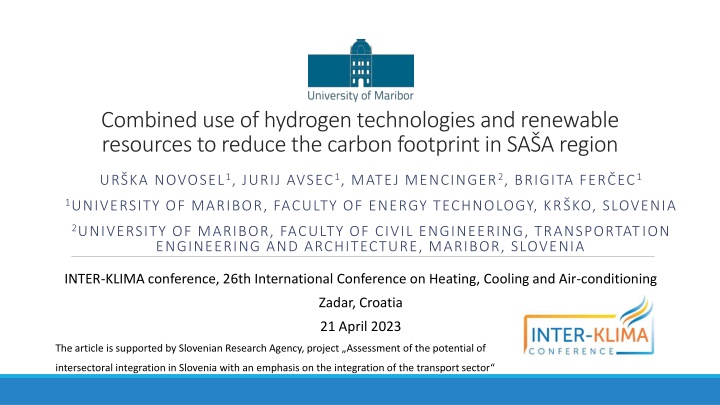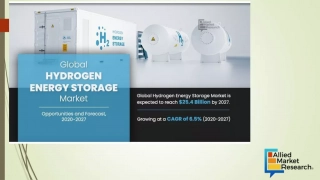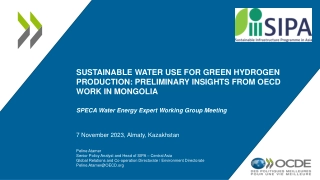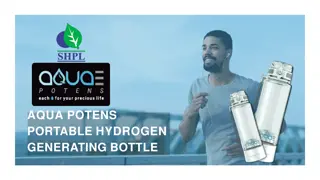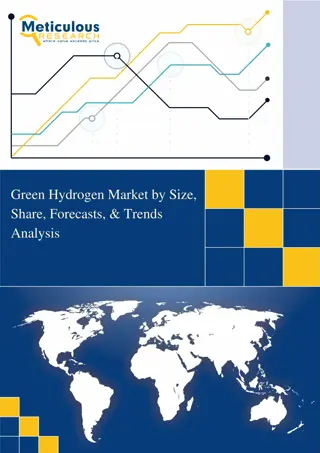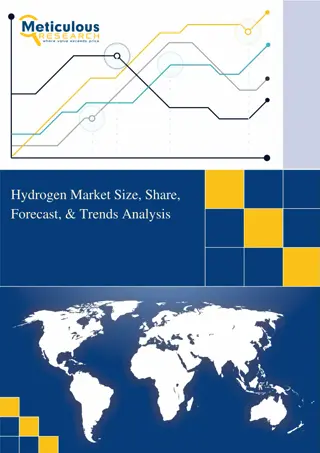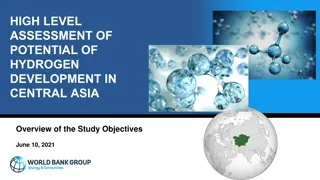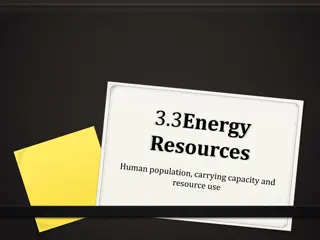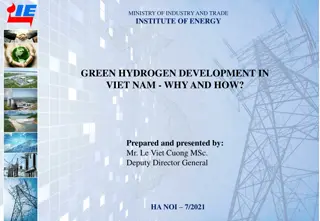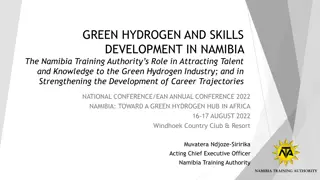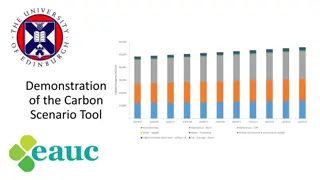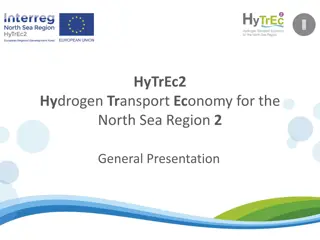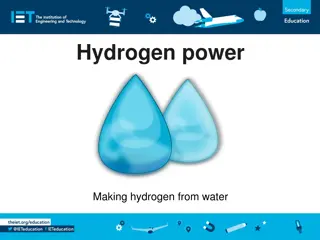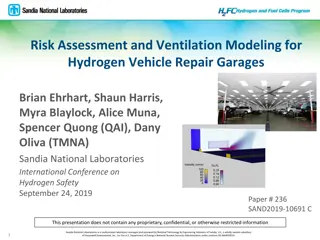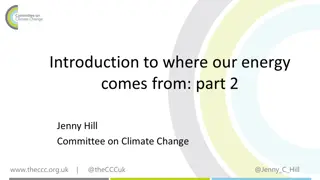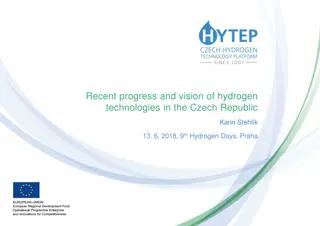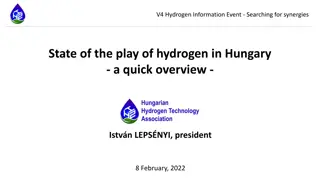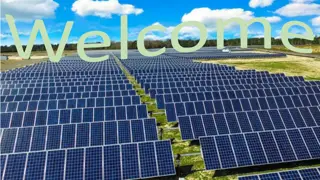Utilizing Hydrogen Technologies and Renewable Resources for Carbon Footprint Reduction in SA Region
Article discusses the integration of hydrogen technologies and renewable resources to reduce carbon footprint in the Savinja-alek region of Slovenia, focusing on energy sector transition, increased energy consumption, and use of RES for electricity, heat, and hydrogen production. It presents a thermodynamic model based on a Rankine cycle using solar energy and wood biomass to meet energy needs, with excess power utilized for hydrogen production through electrolysis.
Download Presentation

Please find below an Image/Link to download the presentation.
The content on the website is provided AS IS for your information and personal use only. It may not be sold, licensed, or shared on other websites without obtaining consent from the author.If you encounter any issues during the download, it is possible that the publisher has removed the file from their server.
You are allowed to download the files provided on this website for personal or commercial use, subject to the condition that they are used lawfully. All files are the property of their respective owners.
The content on the website is provided AS IS for your information and personal use only. It may not be sold, licensed, or shared on other websites without obtaining consent from the author.
E N D
Presentation Transcript
Combined use of hydrogen technologies and renewable resources to reduce the carbon footprint in SA A region UR KA NOVOSEL1, JURIJ AVSEC1, MATEJ MENCINGER2, BRIGITA FER EC1 1UNIVERSITY OF MARIBOR, FACULTY OF ENERGY TECHNOLOGY, KR KO, SLOVENIA 2UNIVERSITY OF MARIBOR, FACULTY OF CIVIL ENGINEERING, TRANSPORTATION ENGINEERING AND ARCHITECTURE, MARIBOR, SLOVENIA INTER-KLIMA conference, 26th International Conference on Heating, Cooling and Air-conditioning Zadar, Croatia 21 April 2023 The article is supported by Slovenian Research Agency, project Assessment of the potential of intersectoral integration in Slovenia with an emphasis on the integration of the transport sector
Motivation 1. Reduction of the use of fossil fuels in energy sector in the future. 2. How to replace fossil fuels with environmentally friendly technologies and still provide reliable energy supply? 3. How to make a healthier environment for a higher quality of life? 4. Use of domestic renewable energy sources for electricity, heat and hydrogen production. 2 INTER-KLIMA
Introduction (1) 1. SA A region is Savinja- alek region in Slovenia with approx. 62,000 residents, mainly dependent on the use of fossil fuels. 2. Coal reserves are limited, energy consumption is increasing, so it is necessary to find an alternative using renewable energy sources (RES). 3 INTER-KLIMA
Introduction (2) 3. Predicted energy consumption in SA A region in 2050 Population growth in SA A region 67494 68000 65594 66000 63694 Population 64000 62174 62000 60846 60000 58000 56000 2015 2022 2030 Year 2040 2050 Use of electric energy (MWh) 368,107 26.9 % Use of energy for heating (MWh) 636,617 46.6 % Use of energy for cooling (MWh) 127,323 9.3 % Use of energy in transport (MWh) 235,362 17.2 % Total (MWh) 1,367,409 100 % 4 INTER-KLIMA
Thermodynamic model 1. Rankine cycle: water is heated by means of two RES solar energy and energy from wood biomass. 2. It provides the entire need for electricity and partial needs for thermal energy and hydrogen in SA A region. 5 INTER-KLIMA
Energy analysis 1. Input data and initial parameters of the Rankine system 2. 1st case: 90 MW of heat flow, 2nd case: 42 MW of heat flow is taken into consideration 3. Excess power is used for the hydrogen production via electrolysis, energy requirement is 70 kWh per kg of hydrogen. 6 INTER-KLIMA
Results 1. Calculation results both cases 7 INTER-KLIMA
Conclusions 1. The article presents an idea how to replace non-renewable energy source with RES and still fully (or partially) provide needs for electricity, thermal energy and energy for transport in the form of hydrogen. 2. It makes sense to use as many domestic RES as possible with the aim of production as many secondary energy sources as possible. 3. From the perspective of environmental protection, the savings are substantial. 8 INTER-KLIMA
THANK YOU FOR YOUR ATTENTION urska.novosel@um.si INTER-KLIMA, Zadar, Croatia 21 April 2023
